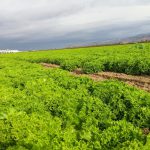 The rich, dark, table-flat fields of California’s Salinas Valley stretch from the Gabilan Mountains in the east to the Santa Lucia Range in the west. Mostly bare in November, a few fertile acres still wear strips of green crops shaded from pale lettuce to dusky broccoli.
The rich, dark, table-flat fields of California’s Salinas Valley stretch from the Gabilan Mountains in the east to the Santa Lucia Range in the west. Mostly bare in November, a few fertile acres still wear strips of green crops shaded from pale lettuce to dusky broccoli.
Turning off Highway 101 into the fields to dig into the astonishing productivity of the Valley, we passed the world’s largest orchid greenhouse. Our destination was the Fresh Leaf Farms processing plant, an unmarked industrial building housing a Willy Wonka setup used to cool, sort, wash, and package the convenient lettuce that we take for granted.I
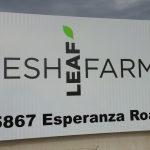 The season is winding down, leaving most of the fields empty and resting over the cold months. We were lucky to get a behind-the-scenes look on the last day of production at Fresh Leaf Farms. The next day the processing plant would be dismantled and trucked to Arizona in an operation worthy of Hannibal crossing the Alps – 80 large trucks (no elephants), countless man hours, and a minute by minute plan. Production starts up again 48 hours later, 575 miles away.
The season is winding down, leaving most of the fields empty and resting over the cold months. We were lucky to get a behind-the-scenes look on the last day of production at Fresh Leaf Farms. The next day the processing plant would be dismantled and trucked to Arizona in an operation worthy of Hannibal crossing the Alps – 80 large trucks (no elephants), countless man hours, and a minute by minute plan. Production starts up again 48 hours later, 575 miles away.
“The valley is like a giant vegetable crisper,” Loree Dowse of Mann Packing told us. Deep ocean currents keep the water of Monterey Bay at a steady 58 year round. Warm rising air in the southern end of the valley draws the chill, foggy air inland up the Salinas River Valley to keep the crops cool. The same fog insulates the fields from cold nights, acting like a blanket to keep in warmth as the sun sets. This unique climate has made the Valley America’s Salad Bowl – producing the vast majority of lettuce, vegetables, and berries that we enjoy year round.
Tramping through the black, muddy soil in a nearby field, Martin Flewell of Fresh Leaf took us to see leaf lettuce being harvested. The crop, a proprietary curly lettuce called Better Burger Leaf, is aimed squarely at the foodservice market. Fresh Leaf grows specialty products like this to meet the needs of commercial operators across America. With the size and shape of a hamburger, it has an attractive frilly edge, a light green color, and no thick rib – delicious to eat and efficient to use.
Efficiency is a big deal with Salinas farmers. When the crop is ready, Arcadian Harvest for example, it needs to be picked, processed, and packed quickly for shipping across the country. Giant machines creep across the fields tended by dozens of workers to get the job done. At one end, the lettuce is cut at the root and put on a conveyor. Martin and I climbed to the upper level to see where it travels down a belt, is trimmed, separated, and stacked in a bin to be taken back to the plant.
 The one-of-a-kind harvester is custom built in Salinas, designed from the imagination of experienced growers to meet the needs of this specific crop. It’s complicated and expensive, but it’s efficient.
The one-of-a-kind harvester is custom built in Salinas, designed from the imagination of experienced growers to meet the needs of this specific crop. It’s complicated and expensive, but it’s efficient.
In the field, the temperature was comfortably in the mid 60s but in the packing plant it was 34, comfortable for the lettuce. Here, fast moving machines sort, triple wash, dry, and bag the lettuce (scroll down in the link for a fascinating video) – boxes of it stacked on pallets ready for the trucks. It’s a complex and high-speed setup with dozens of white-clad workers, bulky in their cold weather gear, tending the machines. Like the harvester, this equipment is custom designed and costly. A bagging machine alone runs about a million bucks, and there are three of them.
The Salinas Valley, about 90 miles from north to south, grows roughly 150 different crops worth almost $4.5 billion on just under 360,000 acres. The principal crops from these productive farms include lettuce, celery, broccoli, strawberries, and wine grapes. Near the coast, the microclimate is one of the best places in the world to grow artichokes. We all regularly eat Salinas produce.
This is farming on an industrial scale, the opposite of today’s trend toward local sourcing and farm-to-table, but it’s what’s needed to feed a large and hungry nation. Sophisticated, well organized, and productive, these quality-oriented farms are on the cutting edge of food farming. Broccoli output, for example, has moved from about 300 pounds per acre to 1300 over the last few decades according to Flewell. Seed selection, farming techniques, and advances in irrigation have all contributed to this growth.
Attention is now turning to matching technology with farming. Silicon valley, with all its marvels, is just up the road. Salinas has its own tech-innovation center to nurture entrepreneurs who might make the next big breakthrough in farming. Automating back-breaking labor, improving irrigation, and managing precious water are all on the table.
For me, driving through the valley is a revelation. This is where our food comes from. Harvesting some fields or seeding others, there’s always activity. When the lettuce ends, cold weather crops like broccoli and brussels sprouts are still going. White plastic hoop houses, like caterpillars on the hillsides, shelter bush berries. Low double rows are strawberries. Wine grapes are trained on their trellises. Everywhere you look in this unique place, you see the magic of American ingenuity and perseverance working to feed America.








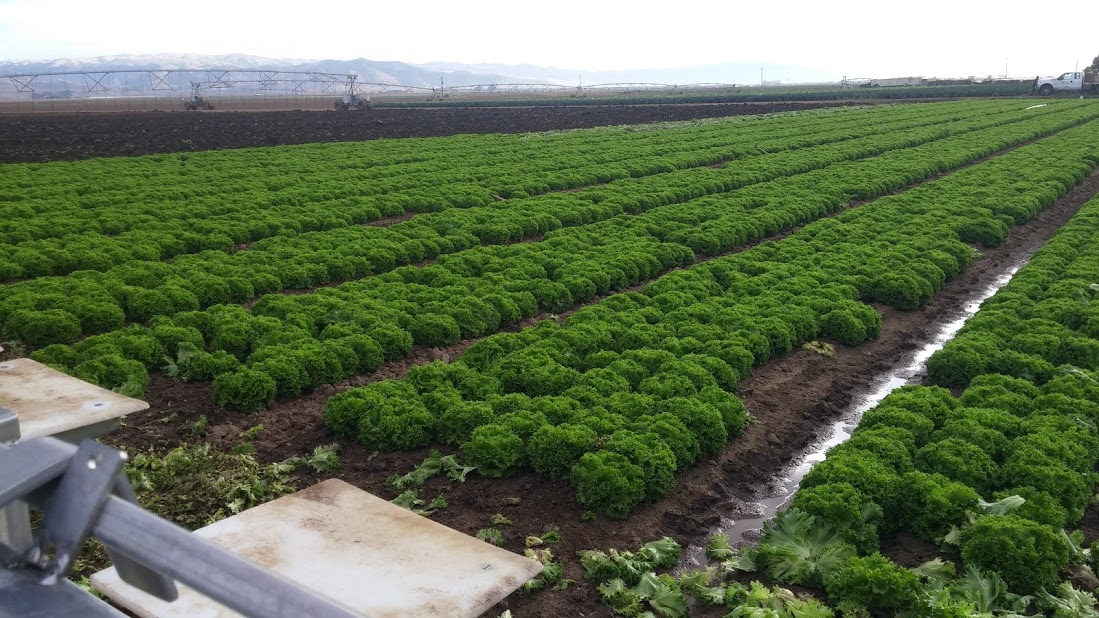
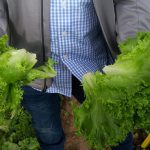

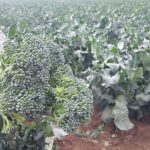

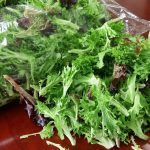


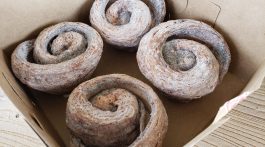
No Comment